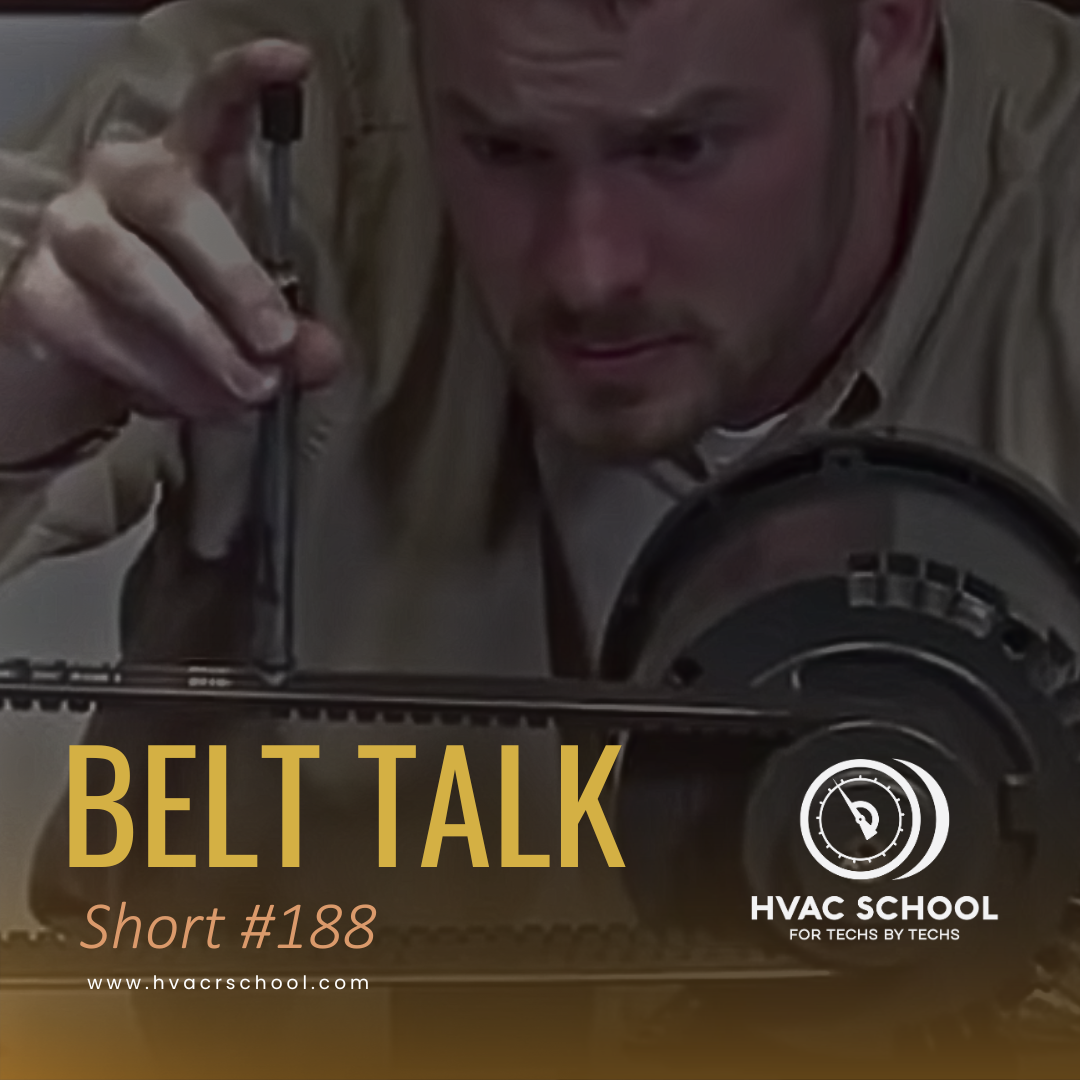Belt Talk – Short #188

In this short podcast episode, Bryan dives into some belt talk, including some bits about pulleys and sheaves. He also shares some belt tensioning tips for your next commercial HVAC job.
Belts are less common than they used to be, but we find them in ventilation fans, RTUs, and AHUs. Squealing belts indicate slippage, which indicates fan inefficiency and energy losses. Belts transmit energy from the motor (pulley) to the fan or blower wheel being driven by it. Motor mounts may be adjustable, but there will be a means of adjusting the tension of the belt. Before we change or replace a belt, we need to make sure the belt is properly aligned (centers should have the proper distance and pitch). Common sense and good observation skills will be your best tools.
Adjustable sheaves shouldn't be touched when you're changing the belt; the adjustment of the sheave is for airflow based on the RPM of the fan motor, not tensioning or setting amperage. We set belt tension by tensioning with a specific tool: a belt tensioner. Belts should be as loose as possible without slipping, but belts will loosen a bit over time and with everyday use, and they may slip eventually. Wear on the pulleys may also cause belts to slip.
Cogged belts, also called notch belts, may bend more easily, last longer, and be more efficient due to reduced resistance (compared to non-cogged belts). Belt efficiency can also be affected by alignment and tightness (being too tight).
Learn more about the 5th Annual HVACR Training Symposium at https://hvacrschool.com/Symposium24.
If you have an iPhone, subscribe to the podcast HERE, and if you have an Android phone, subscribe HERE.”
Subscribe to our YouTube channel at https://www.youtube.com/@HVACS.
Check out our handy calculators HERE or on the HVAC School Mobile App (Google Play Store or App Store).
Author:









Comments
To leave a comment, you need to log in.
Log In